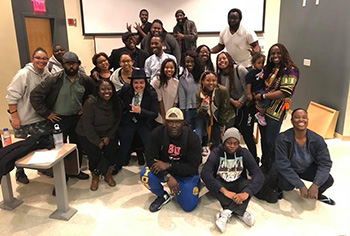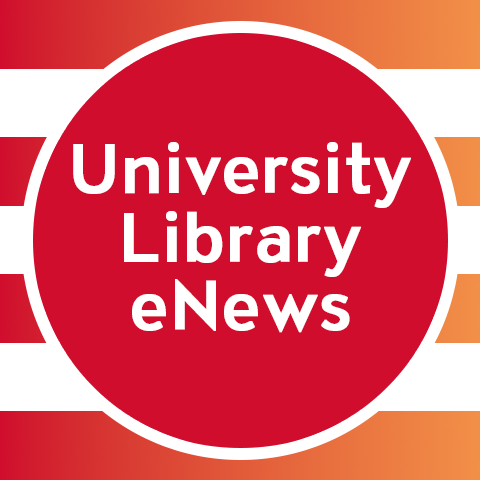Newsletter Edition: Spring 2022
Contributed by Lissa Ramirez-Stapleton and Elizabeth Altman
The Library is collaborating with Deaf Studies Professor Lissa Ramirez-Stapleton to bring the project Black Deaf Life in California online. Black Deaf Life in California is a collection of oral histories conducted in American Sign Language (ASL) with Black Deaf community members. The interviews were developed and conducted by CSUN students. We talked to Dr. Ramirez-Stapleton to find out more about it.
What was motivation behind this project?
The project was launched as a component of my Black Deaf Communities Course – DEAF 412. I do a project every semester that connects the students in some meaningful way with the Black Deaf community. This time the students focused on the contributions of Black Deaf individuals in the state of California. But the impact of this project really goes beyond a class assignment.
First, I wanted to honor the contributions of Black Deaf people in the state, which is not well documented. CSUN entities such as Africana Studies and the Tom & Ethel Bradley Center have done a great job preserving Black history, and the National Center on Deafness (NCOD) built a large collection of Deaf studies resources [merged with University Library collections in 2016]. But where is the history of Black Deaf individuals in these narratives? CSUN Deaf Studies students are often looking for Black Deaf resources and have a really hard time finding them. There hasn't been a lot published on Black Deaf communities, and the preserving and archiving of Black Deaf history is really kind of sporadic across the country. The newly opened Center for Black Deaf Studies at Gallaudet University is going to be a great hub for this knowledge as they continue to grow, but we do not have this type of resource in the West or at CSUN. I've done archival work at Historically Black Colleges and Universities and there are some resources, but they haven’t always been organized in user friendly ways. So this is a start at building a permanent, curated resource related to Black Deaf life.
Perhaps more crucially, this project documents the Black Deaf community at CSUN. I actively work on recruiting Black Deaf high school students to attend CSUN, and firmly believe that you cannot recruit students to a space that's not prepared to retain them. You need to create a rich environment that's educationally, socially, and spiritually a space that people feel they belong. Some of this is creating curriculum, developing Library collections, and sponsoring student involvement opportunities so that when students arrive, they can see themselves and feel they will thrive here.
I worked with the Harambee conference organized by CSUN’s Student Outreach and Recruitment office, which recruited Black high school students to CSUN, to create a hybrid program to reach out to Black Deaf students at the residential schools for the Deaf in California. Students spent a half day at Harambee then a half day with NCOD, but when these students would ask questions about Black Deaf life here, I had no idea what to tell them, unless they wanted to be a Deaf Studies majors. These kids wanted to study math and theater other things. Between not having anything to present to Black Deaf high school students, and our own students desperately looking for things every semester, the need for this project was clear.

How did you select participants for the project?
I worked with the National Black Deaf Advocates (NBDA), Southern California chapter to tap into the community. NBDA is the leading Black Deaf organization in the country for advocacy and leadership, as well as the historical hub for collecting information about Black Deaf life. At least two people from that organization participated, as well as a few CSUN alumni, and personal or professional contacts. The purpose really was to understand Black Deaf life from five different focuses: activism, K-12 education, CSUN alumni, organizations, and family. Participants were asked which of these categories they could contribute to, and we gave people the choice of what aspects of their story they wanted to share with the larger community.
How did you plan the interviews?
The students first needed to learn what oral history is and why it is important. I organized two trainings. During the first training, I invited Dr. Octavian E. Robinson and Dr. D-L Stewart to share their research experiences with doing oral history within the Deaf and Black communities, respectively. We had a conversation about what it meant to bring these two communities together and create ASL oral histories. The Deaf community is really small, and the Black Deaf community is even smaller, so it was important to have those two perspectives in thinking about how we might ask questions and what we needed to be mindful of. The students divided into groups and created questions based on what we talked about during the two trainings, and what they thought would be interesting to know as related to their topic. I helped reword the questions so they weren’t too long, and we tried to create conversational flow, starting with “Tell me about yourself” and then moving into more specific questions. When it came to doing the interviews, each student had their own participant to interview, but they turned to others in their group for support. If people got stuck, wanted to practice, felt nervous, needed some support in the middle of their interview, they could ask for help. Some students were interpreting interns so they interpreted for each other when it came to writing the captions.
What parts of this project required funding?
The biggest piece was interpretation, so we could translate the recorded ASL into English for captions, transcripts and voiceover. Students did the first round of translation and created the captions, but knowing ASL is not the same as being an interpreter – that’s a very specialized skillset. ASL and English have different grammar so just the bare translation is complex. You need to get the right verb tense and figure out the flow of the story. But you're also trying to pick up tone through the size of the signing, how someone is raising their eyebrows, or turning their body. You have to take all of this into consideration to make meaning of how someone is feeling and thinking about the story or whatever they're telling you. Then there are words that can’t be directly translated. I might sign this [gestures with two fingers brushing her shoulders] and you have to put this sign in context. There isn’t a single English word for this -- this could mean “not my business”, “not my fault,” “I'm not in it,” so many different things, depending upon the context and what someone's talking about. And then there’s other body language and facial expression, that indicates tone, like [speaking emphatically] “I’m not in it,” or [speaking worriedly] “oooh – I’m not in it.” So I needed certified interpreters that could pick up on those nuances to produce a more authentic captioned translation of the conversation between the two individuals. After that step, I sent the captioned videos back out to the participants for feedback on the accuracy. The final piece is the voiceovers, and for that I’ve hired student assistants.
What challenges have you faced completing this project?
Because the project is new, there have been many steep learning curves putting the parts together. There are things I would have done differently. I would have hired a certified interpreter for every student from the very beginning, so the interpreter could have created a voice track as the interview was in progress. It was also difficult, doing this in the midst of COVID. It seemed like a perfect opportunity – we were all virtual and I thought the work would all be done on Zoom. But I didn’t consider the fact that people were just moving at a different pace. Trying to recruit participants, schedule the interviews, hire people who weren’t physically nearby to sign in, all added to the work required. And this was a cool project but it had a definite learning curve – students needed to do more than just show up, do the reading and turn in their assignments.
How do you anticipate these ASL histories will benefit the Black Deaf community?
Ultimately, I hope that the project is something Black Deaf folks feel proud of. That’s really important to me-- that the community feels good about what we’ve created –that it was done respectfully, that the translation was done well, that it represents people’s real lives. I want it to demonstrate an effort on CSUN’s part to create space and remembrance of Black Deaf people on this campus. And then I ultimately hope it makes students want to come here, and for the community to continue to engage and collaborate with us. The educational system is challenging for the Black community, period, and the number of Black Deaf students who are transferring from high school to college needs to improve. We have a lot of work to do in terms of building bridges to close the gaps in the educational system and in creating a campus environment that Black Deaf students feel seen.
Is there anything else you want to share about the project?
I've been really grateful for the collaboration with the Library. When I have felt like I was drowning someone always had an idea of something else to try. I think that that faculty should think beyond just, “How can you help my students?” when working with librarians. Librarians have a lot to contribute and there are ways in which we can work together and collaborate so much more than we do now.
--------------------
Black Deaf Life in California was funded by a CSUN Diversity & Equity Innovation Grant. The ASL oral histories will be published on the Library Website in April 2022.
